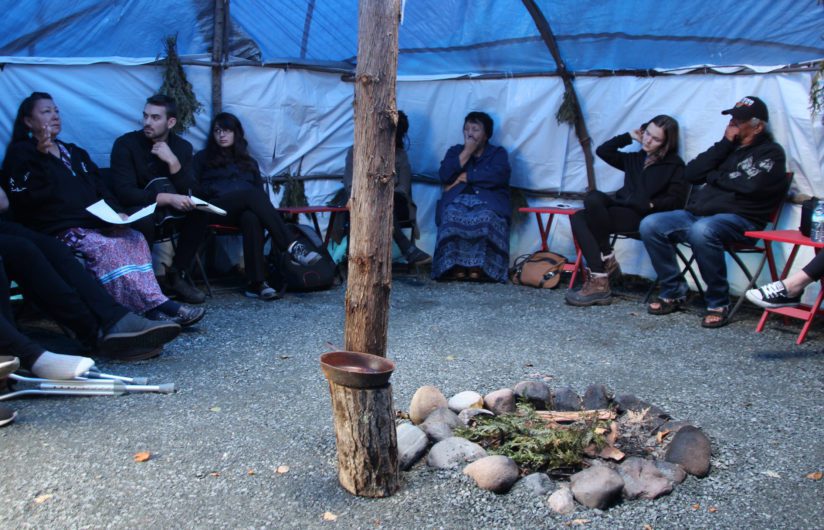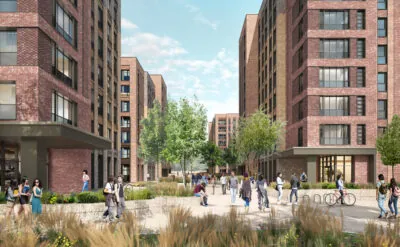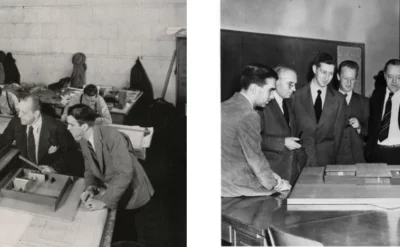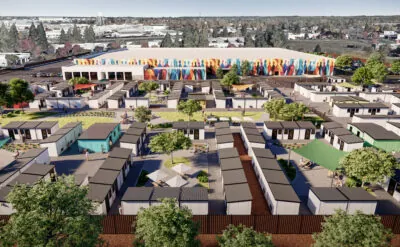The world of design has much to learn from Indigenous Peoples. Tradition and knowledge are valued through harnessing personal and collective principles, thinking of buildings as living stories and embracing design as a way of building relationships, not as producing an innate object.
As the A&E industry continues its journey to find meaningful ways to increase the participation of businesses from Indigenous groups in the procurement system, NORR sat down with Dr. David Fortin to understand the ongoing opportunities and challenges to achieve engagement and inclusion.
Following David’s prompt about the importance of building relationships, we asked, “who are you as a person?”
David is a citizen of the Métis Nation of Ontario and the RAIC Indigenous Task Force. He is a Professor at the University of Waterloo’s School of Architecture, a LEED accredited professional and a registered architect in the Canadian provinces of Ontario, Saskatchewan, Alberta and British Columbia. He was the first Indigenous director of an architectural school in Canada while working as an Associate Professor at McEwan School of Architecture. As a design professional, he believes well designed spaces can strengthen our relationships with each other and the land. As a father, brother, husband and community member, David believes in the design process as part of a story where everyone has a role to play.
David shared his thoughts with us on the following significant topics:
Place-Based Thinking
The connection between Indigenous groups and the lands they reside on cannot be understated. The stories of the land we inhabit are numerous, and with that depth comes immense potential for the projects we build. Treating buildings as another member of the community fosters understanding and respect for all life by reminding ourselves that thoughtfulness and care starts prior to the first day of any project and continues long after the date of occupancy.
Meaningful Engagement
By transcending tokenism and actively seeking engagement, design firms and Indigenous businesses can arrive at a shared and balanced social, environmental and economic goal. This means asking the right questions of the right people. Do workers and companies know the histories of treaties where they are working and living? Are they aware of the different First Nations and other Indigenous groups in the region? Do they understand the importance of seasonal timelines, appropriate ceremonies, or regionally-specific cultural protocols for honoring the land and the communities whose traditional territories they occupy?
These questions require a commitment to constant learning and collectively building deeper respect for all life in any project location, not just focusing on our human needs, comforts, and desires. Working with an Indigenous advisory group and open communication with a community liaison are great steps towards building relationships that leave room for collaboration and growth.
Capacity Building
A commitment to learning means a commitment to teaching as well. Seeking appropriate ways to reach out to Indigenous youth and inspire them to pursue opportunities in the architecture and engineering industry is an important step towards multigenerational learning. Indigenous youth need to feel that they and their communities are respected, appreciated and valued. The number of Indigenous students in architecture and engineering schools is growing and there is opportunity for firms to actively participate in Aboriginal Apprenticeship Programs. Our future includes far more Indigenous designers and Indigenous-owned firms and this is very exciting.
Connectivity
Advancements in communication have improved connectivity to Indigenous groups across Canada allowing designers and community members to connect from remote locations, and to appreciate cultural differences without interrupting traditions. Indigenous peoples are now able to stay connected and contribute to a project in any location. This presents an immediate opportunity to engage and bring a more inclusive perspective to design.
Government Initiatives
Economic and social contributions from the government are critical to a successful future. Public Services and Procurement Canada have committed to fostering the participation of businesses owned or led by Indigenous groups. This includes Indigenous Benefit Plans and partnerships with organizations such as AABO (Aboriginal Apprenticeship Board of Ontario), CAMSC (Canadian Aboriginal and Minority Supplier Council) and CANDO (Council for the Advancement of Native Development Officers).
This participation in the procurement system starts with real-world conversations between businesses and Indigenous communities and groups. Forming partnerships with Indigenous architects and engineers also brings unique perspectives and skills to the project and helps build capacity for Indigenous-owned firms moving forward. A commitment to such meaningful engagements and multigenerational learning is just the start of a journey towards a more inclusive design and construction industry that respects the relations we have with our Indigenous communities, the land, and each other.



